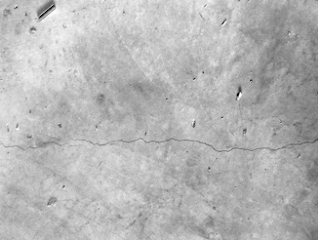SPONSORED
Concrete slab cracks can be a disheartening to see after hours of laborious hard work install a concrete slab. There are several reasons why these cracks occur and each one can be prevented in one way or another. A concrete slab can be used for many things around the home from supports to a sidewalk. Concrete slab cracks in either of these uses will cause the concrete to fail, which can be dangerous. The article below will explain the reasons why concrete slab cracks happen and how you can prevent them from happening.
1. Dry Soil
Concrete, despite being very hard, can act like a sponge. Concrete slab cracks can occur when the soil becomes too dry which can happen because concrete will absorb water from the soil. Once the soil is too dry and the concrete can no longer leach moisture from it the concrete will leach it from itself. This will cause the concrete to become somewhat brittle and possibly to crack. You can fix this problem by diverting water from your home to the ground where the concrete slabs are installed. The concrete will then use this liquid and cracks may never form. The diverting track can be as simple as a trench.
2. Weeds, Grass and Other Vegetation
Concrete slab cracks full of weeds, grass and other types of vegetation are a common sight. Many people think that the concrete slab cracks due to other reasons but they may actually be caused by the plants. Weeds are incredibly persistent and will not stop until they reach the surface. They may be small but they can force their way from below the surface and through the concrete. The slabs will crack and there will be nothing you can do about it other than replacing the slabs. This can be very costly. The solution is to place landscaper's fabric in the excavated hole prior to pouring the concrete. The fabric is created to essentially remove the oxygen from that layer of soil. Without oxygen the plants simply will not grow and you will not have to worry about concrete slabs cracks again.
Concrete, despite being very hard, can act like a sponge. Concrete slab cracks can occur when the soil becomes too dry which can happen because concrete will absorb water from the soil. Once the soil is too dry and the concrete can no longer leach moisture from it the concrete will leach it from itself. This will cause the concrete to become somewhat brittle and possibly to crack. You can fix this problem by diverting water from your home to the ground where the concrete slabs are installed. The concrete will then use this liquid and cracks may never form. The diverting track can be as simple as a trench.
2. Weeds, Grass and Other Vegetation
Concrete slab cracks full of weeds, grass and other types of vegetation are a common sight. Many people think that the concrete slab cracks due to other reasons but they may actually be caused by the plants. Weeds are incredibly persistent and will not stop until they reach the surface. They may be small but they can force their way from below the surface and through the concrete. The slabs will crack and there will be nothing you can do about it other than replacing the slabs. This can be very costly. The solution is to place landscaper's fabric in the excavated hole prior to pouring the concrete. The fabric is created to essentially remove the oxygen from that layer of soil. Without oxygen the plants simply will not grow and you will not have to worry about concrete slabs cracks again.
3. Seismic Testing
This type of things only occurs in areas rich in natural gas or oil. A company will use seismic shockwaves as a way to find these rich deposits. The seismic waves will travel for miles in all directions and through everything it comes into contact with. Once these waves hit concrete they can certainly cause cracks much like an earthquake interacting with skyscrapers. There is no real recourse you can take other than filing a lawsuit.
This type of things only occurs in areas rich in natural gas or oil. A company will use seismic shockwaves as a way to find these rich deposits. The seismic waves will travel for miles in all directions and through everything it comes into contact with. Once these waves hit concrete they can certainly cause cracks much like an earthquake interacting with skyscrapers. There is no real recourse you can take other than filing a lawsuit.
4. Fast Curing
Concrete has two curing times: hardened and set. A concrete slab will be hard in about a day which means it can be walked on and used as normal but it will not be completely set for another week. Trying to rough this curing process by using mechanical methods can cause concrete slab cracks to form.
Concrete has two curing times: hardened and set. A concrete slab will be hard in about a day which means it can be walked on and used as normal but it will not be completely set for another week. Trying to rough this curing process by using mechanical methods can cause concrete slab cracks to form.
Thank for Doityourself for sharing this info :)




